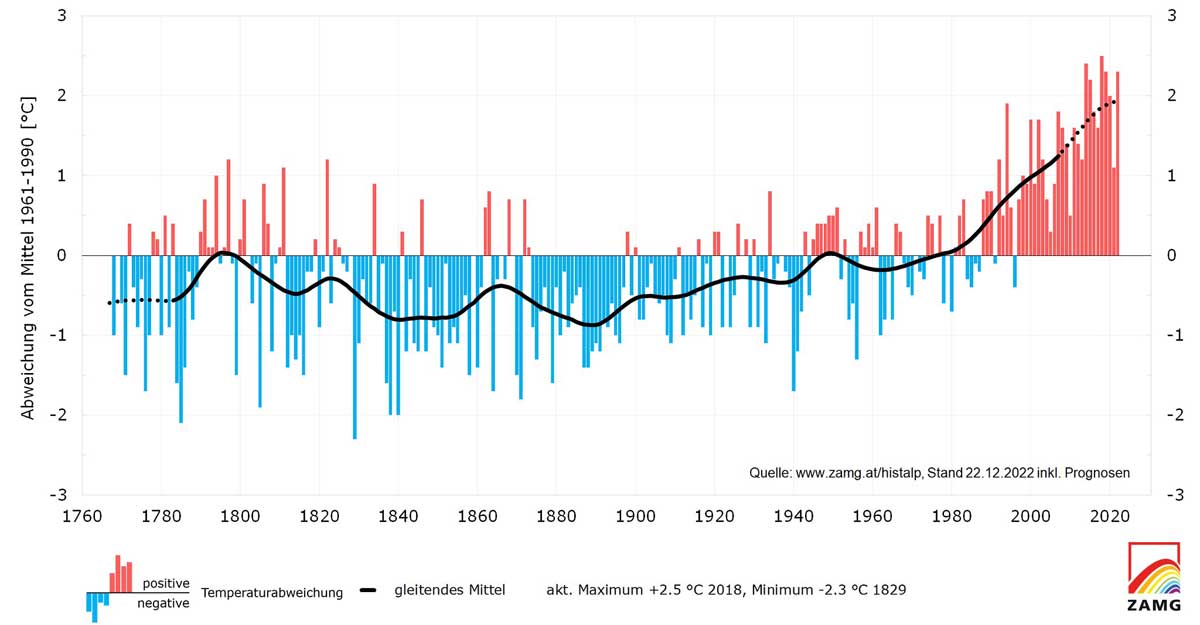4 January 2023
Kitzbühel Insight: 'La Dolce Vita' flair with or without snow

Yesterday, pictures from slope-lanes on green meadows were spread by Austrian broadcasters (ORF on Instagram) with the latest statistics concerning the development of temperatures in the country's normally snow-sure regions. The shown slopes are prepared from the snow fallen in former weeks before the higher temperatures melted the white sugar from the mountains of the Austrian alps. The national meteorological and geophysical service ZAMG (Central Institution for Meteorology and Geodynamics) reports that the amount of fresh snow was during December around 25 to 65 % below average on the mountains and that the snowfall across Austria was concentrated in the first half of the month up to 17th December.
According to the forecast, the higher temperatures will hold on over the next few days. One of the topics in the reports about the weather is the impact on winter sports and the change of sports activities towards biking, hiking, paragliding caused by the expected fewer possible skiing days in lower heights. Weather experts speak about a climate change that has already happened.
On the same day as the Austrians saw the effects of the man-made global warming on the beloved ski slopes, Fashion.at received insights into the winter sport destination Kitzbühel in Tyrol where 'La Dolce Vita' is celebrated in any case of weather. The pictures - also partly published at www.greif-restaurant.com - show the Aperol Spritz Aperitivo Bar which is located from 16 December 2022 until 31 March 2023 in front of the restaurant 'Greif' of the hotel 'Goldener Greif' in the center of Kitzbühel. The bar serves Italian espresso and cappuccino including small breakfast snacks in the morning and in the afternoon aperitivo snacks with alcoholic or non-alcoholic drinks for the Mediterranean vibe.
Image: The picture shows the chart of the temperature development in Austria, provided by the ZAMG (Central Institution for Meteorology and Geodynamics) with the information that 2022 is one of the three warmest years in the 256-year history of measurements. The warmest years were almost always in the recent past: The above-average warm (red) and cold (blue) years are shown in comparison to the climate reference period 1961-1990, based on ZAMG-HISTALP data (lowlands). The smoothed trend line is drawn in black. Source: ZAMG, https://www.zamg.ac.at/; https://www.flickr.com/photos/zamg/52579720748/.
|


